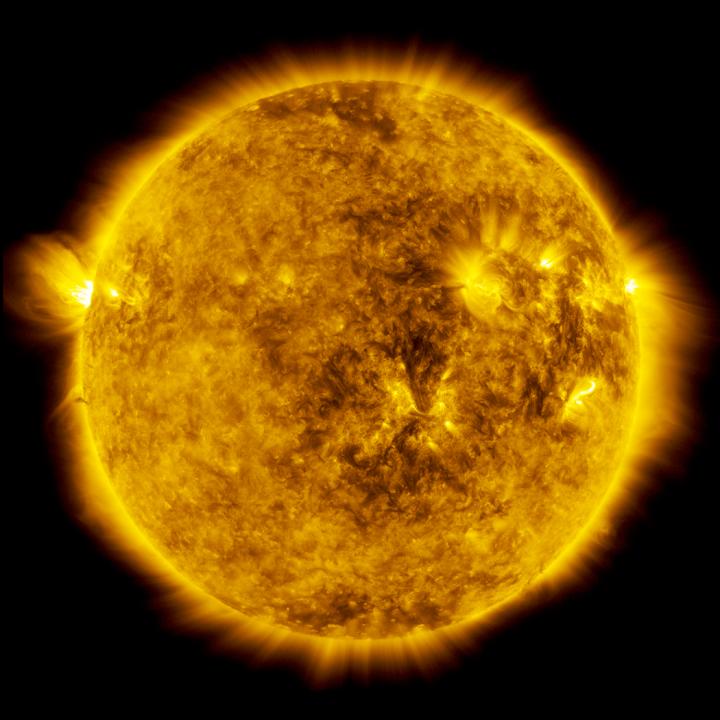NASA's SDO sees partial eclipse in space

On May 25, 2017, NASA's Solar Dynamics Observatory, or SDO, experienced a partial solar eclipse in space when it observed the moon passing in front of the sun. The lunar transit lasted about an hour, between 2:24 and 3:17 p.m. EDT, with the moon covering about 89 percent of the sun at the peak of its journey across the face of the sun. Credit: NASA's Goddard Space Flight Center/SDO/Joy Ng, producer
While the moon's edge appears smooth in these images, it's actually quite uneven. The surface of the moon is rugged, sprinkled with craters, valleys and mountains. Peer closely at the image, and you may notice the subtle, bumpy outline of these topographical features.
Later this summer on Aug. 21, 2017, SDO will witness another lunar transit, but the moon will only barely hide part of the sun. However, on the same day, a total eclipse will be observable from the ground.
A total solar eclipse — in which the moon completely obscures the sun — will cross the United States on a 70-mile-wide ribbon of land stretching from Oregon to South Carolina.
Throughout the rest of North America — and even in parts of South America, Africa, Europe and Asia — a partial eclipse will be visible.
The moon's rough, craggy terrain influences what we see on Earth during a total solar eclipse. Light rays stream through lunar valleys along the moon's horizon and form Baily's beads, bright points of light that signal the beginning and end of totality.
The moon's surface also shapes the shadow, called the umbra, that races across the path of totality: Sunlight peeks through valleys and around mountains, adding edges to the umbra. These edges warp even more as they pass over Earth's own mountain ranges.
Visualizers used data from NASA's Lunar Reconnaissance Orbiter, or LRO, coupled with NASA topographical data of Earth, to precisely map the upcoming eclipse in unprecedented detail. This work shows the umbral shape varies with time, and is not simply an ellipse, but an irregular polygon with slightly curved edges.
LRO is currently at the moon gathering data and revolutionizing our understanding of Earth's nearest celestial neighbor. Knowing the shape of Earth and the moon plays a big part in accurately predicting the umbra's shape as it falls on Earth, come Aug. 21.
SDO will see its partial eclipse in space just after the total eclipse exits the United States.
###
For more information about the upcoming total solar eclipse, visit eclipse2017.nasa.gov.
Media Contact
All latest news from the category: Physics and Astronomy
This area deals with the fundamental laws and building blocks of nature and how they interact, the properties and the behavior of matter, and research into space and time and their structures.
innovations-report provides in-depth reports and articles on subjects such as astrophysics, laser technologies, nuclear, quantum, particle and solid-state physics, nanotechnologies, planetary research and findings (Mars, Venus) and developments related to the Hubble Telescope.
Newest articles

Webb captures top of iconic horsehead nebula in unprecedented detail
NASA’s James Webb Space Telescope has captured the sharpest infrared images to date of a zoomed-in portion of one of the most distinctive objects in our skies, the Horsehead Nebula….

Cost-effective, high-capacity, and cyclable lithium-ion battery cathodes
Charge-recharge cycling of lithium-superrich iron oxide, a cost-effective and high-capacity cathode for new-generation lithium-ion batteries, can be greatly improved by doping with readily available mineral elements. The energy capacity and…

Novel genetic plant regeneration approach
…without the application of phytohormones. Researchers develop a novel plant regeneration approach by modulating the expression of genes that control plant cell differentiation. For ages now, plants have been the…





















